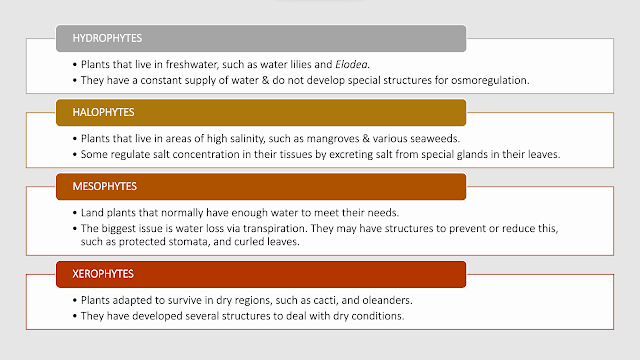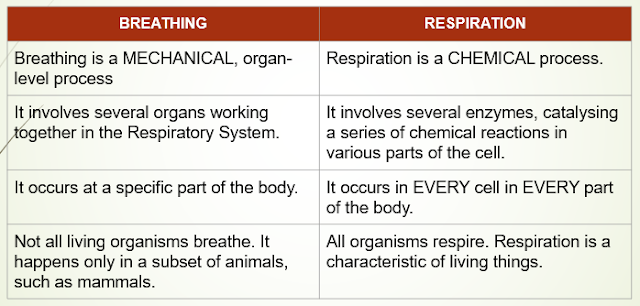WATER CONSERVATION [CSEC BIOLOGY]
SYLLABUS OBJECTIVE(S)
[B4.10] discuss adaptation in plants to conserve water;
For plants, water balance is very important.
- It keeps their cells turgid
- It allows for water to be used as s transport medium in the plant.
Unlike animal cells, plant cells are not harmed by hypotonic conditions, i.e. high water concentrations. Instead they are vulnerable to hypertonic conditions, i.e. low water concentrations.
Osmoregulation in plants, therefore, generally focuses on conserving water and reducing water loss via transpiration.
"...the reason why water availability is so tied to plant productivity is not related to photosynthesis's direct need for water as a substrate, but rather because freely available water allows plants to keep stomata open and take up more carbon dioxide." Campbell Biology p.824
PLANTS CAN BE CLASSIFIED ACCORDING TO THE ENVIRONMENTS THEY LIVE IN, IN TERMS OF WATER AVAILABILITY.
 |
| Click on Image to get a clearer view |
WATER CONSERVATION STRATEGIES
Adaptations to Reduce or Slow Transpiration Rate
- Thick, waxy cuticle on leaves
- Reduced leaf surface area, using either small leaves or spines
- Hairy leaves or stems to trap water vapour
- Curled leaves to provide a a moist micro-environment
- Leaf loss during times of dryness
- Fewer stomata
- Sunken stomata, which provides a high humidity micro-environment
- Stomata that close in the daytime (CAM Plants - see below)
Adaptations to Improve Water Supply and Store Water in Times of Shortage
- Excessively long roots, such as the mesquite plant that has roots more than 20 m long. Such plants can get moisture at or near the water table.
- Fleshy, succulent leaves with a flexible surface
- Fleshy, thick stems that can store water for the long, dry periods
- Fleshy, underground tubers
Other Adaptations
- Some plants adapt by completing short life cycles during the brief rainy seasons. This applies to several desert plant species
- Crassulacean acid metabolism (CAM) photosynthesis. CAM plants can thus take up carbon dioxide at night and can then leave stomata closed during the day. CAP plants belong to Crassulaceae and other taxonomic Families.
 |
| Pineapple is a CAM Plant |


